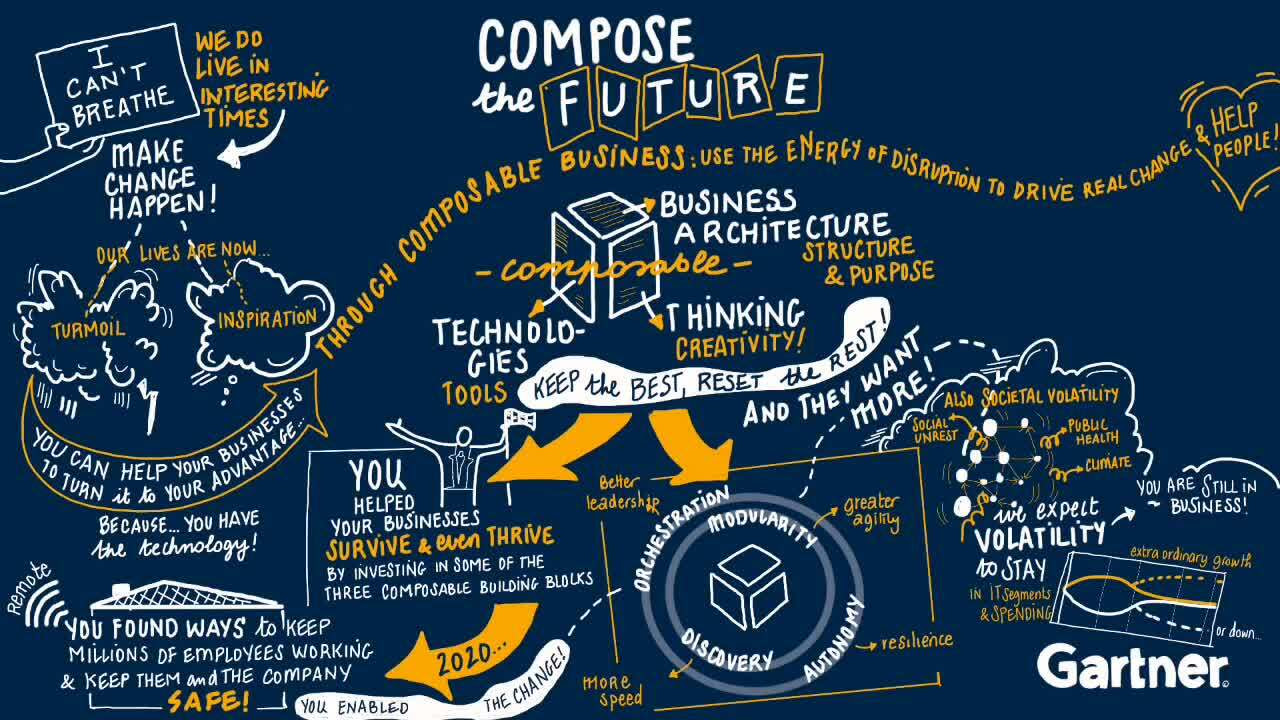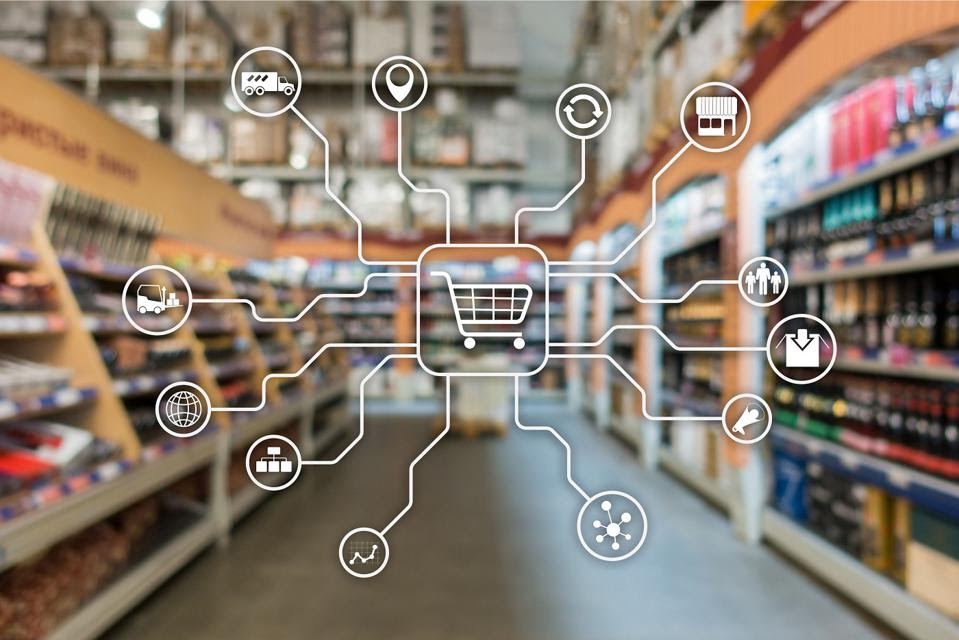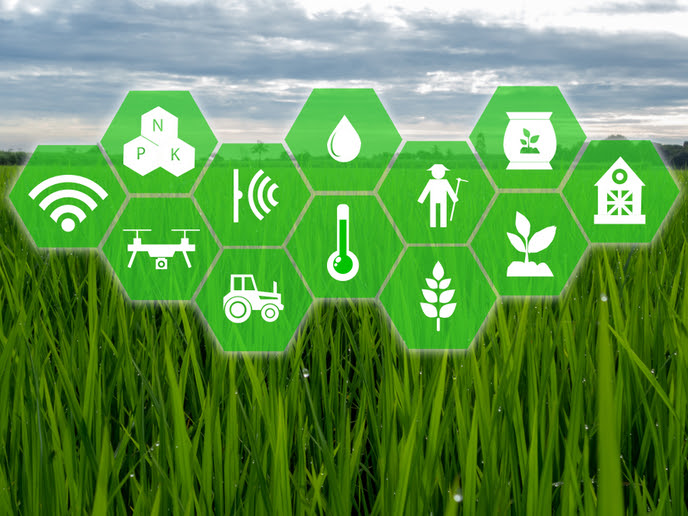From cloud to composable business

This is once again the year of the cloud: for companies, being able to access the resources provided “as-a-service” by third parties continues to represent a factor of digital innovation and competitiveness. The cloud has proven to be fundamental during the pandemic, enabling our economies to operate. In 2022 it remains a strategic technology: it will support the shift to hybrid work, which involves the migration of large amounts of work to cloud-based environments, and will further expand its applications.
Gartner predicts that global companies spending on public cloud services will grow 21.7 percent this year compared to 2021 to a value of $ 480 billion. By 2026, it will exceed 45% of the total IT spending of an enterprise; it was less than 17% in 2021. “The cloud is at the root of the newest technology revolutions, including composable business”, writes Gartner. “The cloud has proven in these uncertain times to be resilient, scalable, flexible, fast. Hybrid, multicloud and edge environments continue to grow and pave the way for new distributed cloud models”.
Composable business is defined by Gartner as the evolution of digital business that allows to obtain higher levels of resilience and agility. It translates into a modular corporate structure, where even software architectures are a set of elements to be joined according to the need of the moment, even with the ability to “improvise”. Only the flexibility of the cloud can enable composable business.
AI, virtual assistants and seamless retail

The applications of the cloud are manifold not only because the cloud is flexible, but because it is combined with other cutting-edge technologies such as artificial intelligence (AI) and machine learning (ML), data analysis, security. This is why we talked about technological interconnection.
Gartner itself predicts that cloud services from major vendors will become fully managed and AI-powered. In fact, it is not possible to talk about the cloud without including data analysis and artificial intelligence. From Telcos to utilities, from healthcare to manufacturing, all companies need to do predictive monitoring and maintenance, to be informed in order to decide, to anticipate problems and trends as much as possible, to react to challenges and quickly seize opportunities.
And if the cloud is ubiquitous, so is becoming the AI. In 2022, the market for Intelligent virtual assistant applications will gain momentum: Grand View Research has predicted that the global market for chatbots and smart speakers will grow by 28.5% (CAGR) from 2021 to 2028, taking its value from 5.82 billion dollars in 2020 to 51.9 billion.
E-commerce companies, in particular, will continue to benefit greatly from virtual interfaces that assist in sales and collect customer inputs, which are essential for building seamless channel strategies. The 2022 of retail will more and more be shaped by the culture of the “liquid” channel.
IoT, objects watch and converse

Virtual assistants rely on technologies as Natural language processing (Nlp) and voice and dialogue management solutions essential in the human-machine interface. Computer vision is also a key element of the relationship with smart objects and will play an increasingly important part in the IoT.
The Internet of things is certainly a trend to follow in 2022 – obviously linked to data management and intelligent data analysis (the topic was at the heart of our recent I-Week event). Just think of smart factories, where sensors that “watch” the assembled products can detect any defects in real time and allow to intervene. Another example are telecom networks and utility assets, where sensors warn if it’s time for maintenance or if there is energy waste. In a year in which sustainability goals (the UN SDGs but also the issues collected in the ESGs acronym) will be increasingly important, data and AI can contribute in a substantial manner to make a decisive contribution.
Can we predict the future?

Yes, at least in some part. Data and artificial intelligence enable predictive and prescriptive analysis and allow companies to estimate future risks and trends so they can develop action plans, both as a mitigation and as an active and proactive strategy. Predictive analysis uses statistics and modeling to detect potential problems before they occur. It is based on the relationship between data sets and custom algorithms that report any anomalies or deviations from previous models, suggesting errors or changes in progress. It will not be an exact forecast of the future, but predictive analysis certainly allows you to anticipate problems and to react to new trends to decide accordingly. In practice, it allows you to quickly move from knowledge to action.
Prescriptive analysis analyzes data to define possible action plans in advance. Thanks to the collection and analysis (with machine learning techniques) of historical data and new data arriving in real time, companies can define models showing trends, errors and risks as they have occurred up to that moment and how they might present themselves in the future. Based on these models, data scientists help executives to define medium-term strategies.
Analysts refer to this trend as decision intelligence or decision AI and Gartner places it among the main trends of 2022 for AI. It is a combination of artificial intelligence, machine learning and predictive and prescriptive analytics that enables a more accurate and much faster data-based decision making. In fact, the decision making process is automated, although it is supervised by data experts and business leaders, who always have “the final say”.
Technological interconnections rely on data
There are certainly many more trends for data in 2022, but one major trend encompasses all: the use cases are built on a set of closely interconnected technologies. In this mix, the cloud acts as an enabling factor, but everything always relies on data and data management.
Nothing new for us at DuneD: we are a Data Product company and we build products based on data (your data) mixed with Data Blending, which we know how to interpret thanks to our Data scientists and to which we combine Artificial Intelligence, so we can create an interface that improves human-machine interaction.
The mission of DuneD is to support customers along their journey to becoming a Data-driven company and it does so by helping them to enhance their data, their main asset, with advanced Analytics and Business Intelligence tools. We are at the frontier of data intelligence: as the only certified Italian partner of AWS for Advanced analytics and Service delivery, we develop solutions based on AWS Quick Sight Q and Self-BI products that use natural language for queries.
All this allows you to extract from your data the knowledge you need to base the actions (Actionable Insights) that are functional to your strategy. Whether it is the IoT, the seamless channel or predictive and prescriptive analytics, in 2022, as every year, DuneD is ready to partner with you to leverage your data to increase your ability to innovate.
Food for thought…
- The book “Shift, A Marketing Rethink“ brings together a series of bylines by global top managers on the latest in technology and data analysis applied to marketing and communication. Published by PHD Media
- The necessary balance between AI and humanity: five predictions for the Customer experience in 2022, in a Forbes article
- Decision intelligence as a new frontier for AI: an article by Bcs.org The Chartered Institute for IT
- Trends about conversational AI and voice interfaces, an article by Towards Data Science (Medium)
Interesting Podcasts…
- Connectivity is another essential technology for digitization and this year we will see a growth in the use cases of 5G. The scenario of 2022 (and beyond) according to Ericsson
